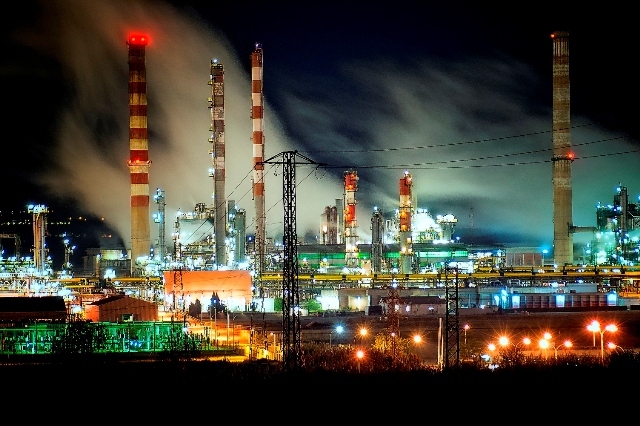
Africa is on an upward growth curve, and it is both real and sustainable, underpinned by a longer term process of social, political and economic reform.
This has taken place across much of the continent since the end of the Cold War and the Apartheid era; a period during which inflation has been brought under control, foreign debt and budget deficits have reduced, state-owned enterprises have privatised, regulatory and legal systems have strengthened, and many African economies have opened up to international trade and investment.
Widespread reform has resulted in an ever improving business environment, and this, together with other factors such as the commodities boom and increasing infrastructure investment, have contributed to a doubling of economic output over the past decade.
Resources generally, and oil and gas specifically, have played an important role in this growth.
African countries continue to increase their production of oil and/or gas and revenues from higher prices combined with the investment that new discoveries are attracting have made a key contribution to growth and developmental initiatives.
It is therefore not surprising that investors are optimistic about the potential for growth in the African oil and gas sector.
EY recently completed our most recent Africa Attractiveness Survey of over 500 business leaders, to better understand the perceptions and realities of Foreign Direct Investment (FDI) into and across Africa, and the region’s growth potential.
The results highlighted that for Africa, the past decade has been one of robust and sustained economic growth.
Since 2000, in a global economy that has been tough at times, the overall size of the African economy has more than doubled in purchasing power parity terms.
This high growth is forecast to continue, and the IMF forecasts that 10 of the world’s 20 fastest growing economies in the period to 2018 will be in Africa.
The directional trend of economic, political and social factors give us confidence that a critical mass of African economies are poised to drive the structural transformation required over the coming decades to not only sustain, but even accelerate, growth and development.
In terms of expected growth over the next five years, Africa will trail only developing Asia.
Growth for the continent as a whole in the period to 2018 is expected to average 7.3% (North African growth is expected to average 6.6%, while Sub-Saharan growth is expected to average 7.7%).
SUBHEAD
Reserves and production
As of the end of 2013, according to the Oil & Gas Journal, proved African oil and natural gas reserves are estimated to be almost 228billion barrels oil-equivalent, with total reserves up sharply from the 2012 total of 213billion boe, due largely to revisions in proved gas reserves.
Oil accounts for about 56% of the continent’s total resource, but gas reserves are growing far faster.
The resource base is currently dominated by Nigeria, Algeria and Libya, which collectively accounted for almost 72% of the region’s total proved reserves in 2013, but the identified resource and reserve base is progressively becoming more diversified.
There are ever-increasing discoveries of new oil and gas . . . such as in Ghana, Tanzania, Mozambique, Kenya and Uganda . . . and bright prospects are seen for many other countries, including Sierra Leone, Morocco, Gabon, Côte d’Ivoire, Liberia and Mali.
After declining in 2011 with the Libyan civil war, African oil production (including crude oil, condensates and natural gas liquids) is estimated to have increased to about 9.8million barrels per day in 2012.
Total natural gas production (including marketed, re-injected, vented and flared gas) reached 13.8trillion cu.ft that year too, while marketed production of African gas was estimated at about 8.4TCF.
Production is highly concentrated for both oil and natural gas in Africa, with the five largest producers (Algeria, Angola, Egypt, Libya and Nigeria) accounting for more than 86% of the region’s oil production and more than 90% of its gas output.
However, despite current levels of concentration, 23 African countries were producers of oil and/or gas in 2012, and oil and gas will be a key driver of growth across much of Africa in future.
SUBHEAD
Looking forward
As yet further evidence of Africa’s tremendous potential, the International Energy Agency (IEA) in its most-recent World Energy Outlook, expects that more than $2.2trillion will need to be invested in African oil and natural gas supply infrastructure over the 2013-2035 period – an average of almost $100billion per year, more than the IEA expects will be invested in the Middle East, the Former Soviet Union, or even in Asia over the same period.
There is a distinct wave of optimism pulsing through the African oil and gas industry, particularly so in the eastern part of the continent, which has historically seen little oil and gas development.
Recent discoveries could transform the landscape, fuelling widespread economic and social development. However, significant challenges remain, particularly in terms of infrastructure development and political stability/transparency.
Some have noted that in many parts of the continent, governments are getting tougher on the industry: imposing local content restrictions, pressuring companies to increase and accelerate development, attempting to collect capital gains taxes for farm-outs, denying/reducing tax rebates and/or levying higher import duties, and imposing tighter environmental terms.
Overall though, the challenges certainly seem to outweigh the potential rewards.
Barry Fraser is a director with the Aberdeen Transaction Advisory Services team at EY
Recommended for you
